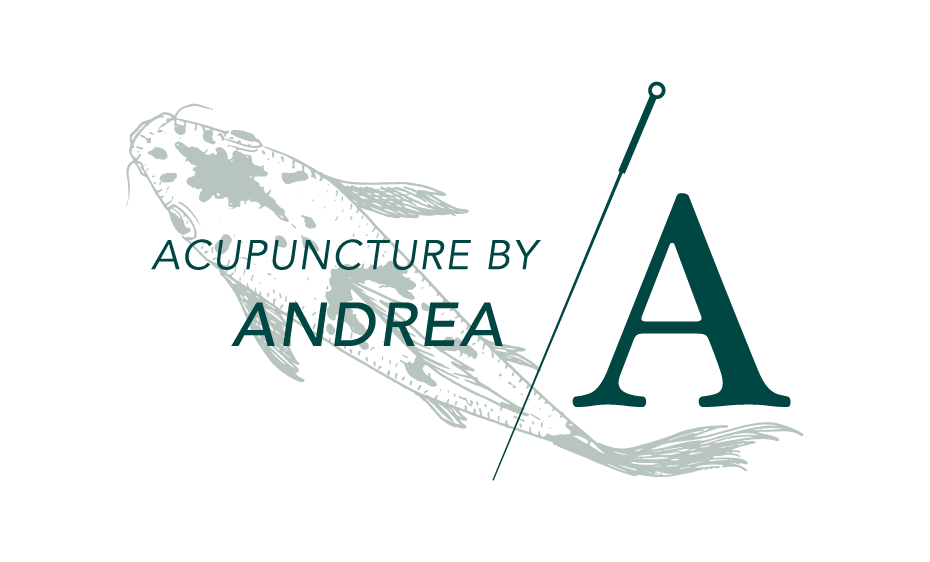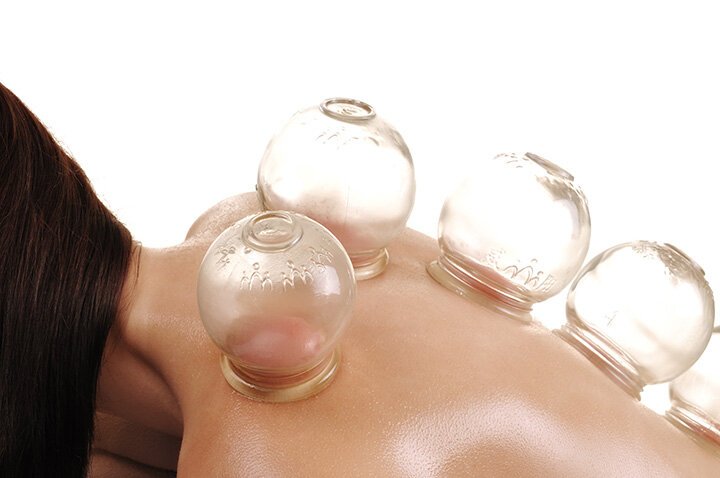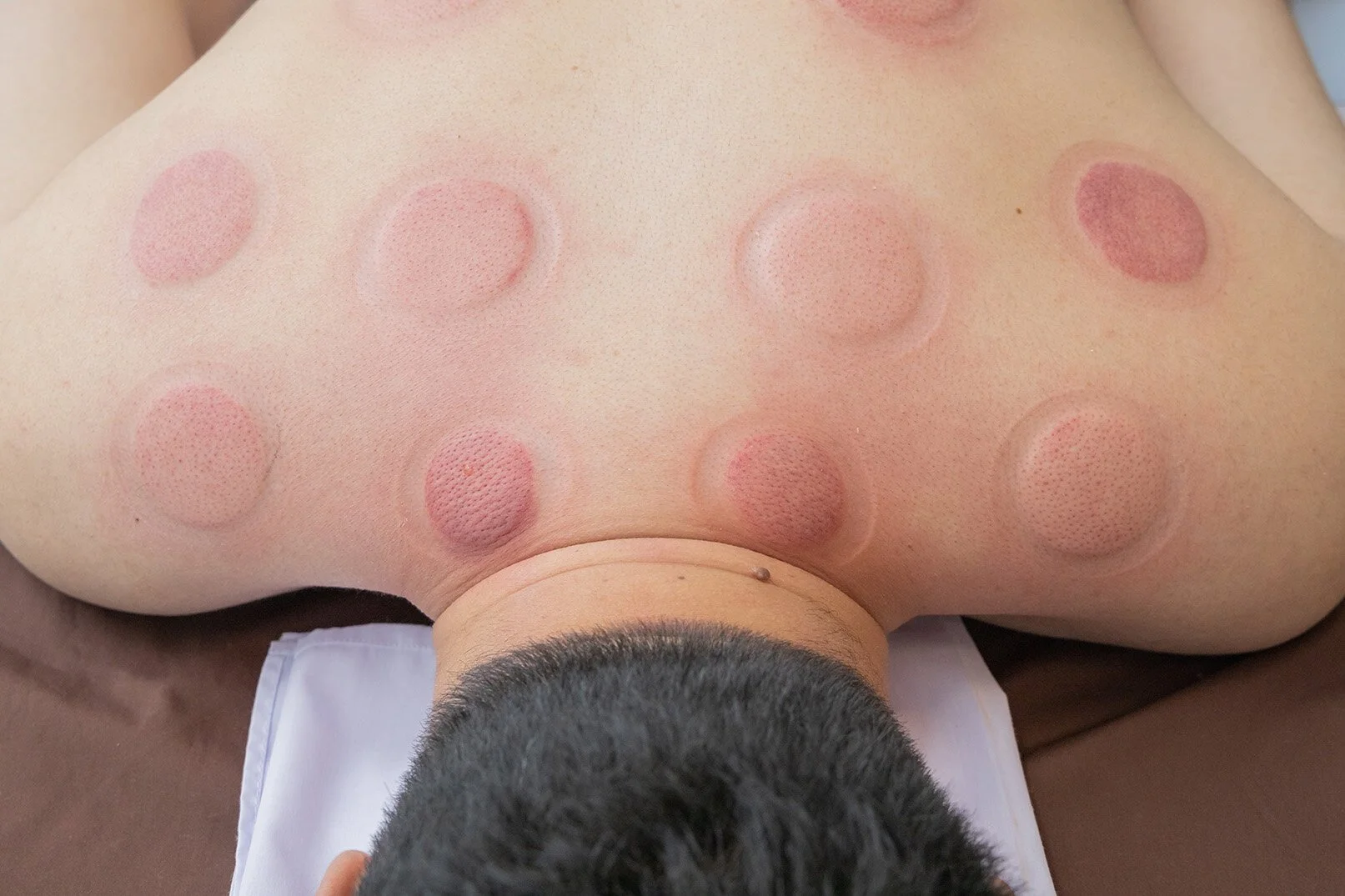Cupping To Alleviate Shoulder Pain
Shoulder pain, frozen shoulder and range of motion issues within the shoulder joint are commonly seen at the Acupuncture by Andrea clinic. The shoulder is an area that tends to be compromised over time due to lack of blood flow, wear and tear on connective tissues such as ligaments and tendons, and daily use for many years leading to inflammation.
In Traditional Chinese Medicine (TCM), inflammation is considered to be stagnation not only in the area immediately affected, but also in related organ systems. The corresponding organ system for most of the shoulder area is that of the large and small intestines.
Shoulder issues often occur through lack of blood flow due to decreased volume and stagnated movement. The intestines use a large amount of blood to do their digestive work and move the waste out of our bodies. I approach healing shoulder pain by targeting specific meridian points to affect these governing organs while directly treating designated shoulder points.
To relieve shoulder pain and restore freedom of movement, it is necessary to re-train the shoulder muscles so they move together smoothly. Physiotherapy can be very helpful, but Traditional Chinese Medicine and acupuncture actually achieve better mobility. A study comparing patients with frozen shoulder who were only performing exercises to improve their condition, with patients who exercised and received regular acupuncture treatments was revealing. The patients receiving acupuncture scored significantly higher in improved mobility and reduced pain, and these positive healing effects lasted for months after treatment ended.
How Does Cupping Work?
Cupping therapy has been used for thousands of years. Ancient practitioners first worked with hollowed-out horns, then bamboo, clay and finally glass cups as we use today. Cupping therapy is often used in conjunction with acupuncture to increase blood blow and movement in the shoulder where the suction promotes increased circulation. Better circulation helps relieve muscle tension, promote cell repair, and aid tissue regeneration. Cupping is often recommended as a complementary therapy for back pain, headaches and migraines, knee pain, muscle, neck and shoulder pain, and sports injuries.
The cupping process uses suction cups to stimulate skin and muscles. A heating element is placed inside the cup and quickly withdrawn to create a vacuum and a pump creates the suction. Glass or plastic cups have toggles at the top that allow for air to be drawn out. The toggles are surrounded by rubber that seals off the airflow. The cup is placed over fleshy, muscular areas—bony areas and ligaments will not hold the suction as they do not contain enough soft tissue for the blood to flow rapidly. In treating the shoulder, we know that there is pain in this location because the connective and bony tissue in this area limit blood flow. Cupping is particularly effective in treating this bony area of the body by forcing blood to circulate here.
I will find the spots that are tender (corresponding to acupuncture points), on which to place the cups. For the shoulder that means over the scapula, on the deltoid, the trapezius muscles, the latissimus, the pecs, and some of the neck muscles.
Cups are left on the area for 5-25 minutes depending on the level of stagnation and the patient’s comfort. The patient usually begins to feel pain relief while the cups are on, and this continues after the cups are removed.
Red to purplish-black circles will mark the skin once the cups are removed. These areas may remain tender for a few days, and the discoloration may last 1-2 weeks, but don’t worry it will disappear and leave no marks.
Most patients enjoy the cupping process, and quickly realize that it increases their range of motion without the painful manipulation the arm is forced into with other rehabilitative methods.
Acupuncture + Cupping
I recommend treating with acupuncture simultaneously with a cupping treatment to further move the stagnated qi and blood. When I apply acupuncture to release a meridian or organ, the flow is led down and out of the body to exit. Because the large and small intestine meridians run across the shoulder area, and their partner organs are the bladder and the stomach meridian (which run down the legs), I place needles in points along the lateral aspect of the leg to help signal the brain to allow for the release of the stagnated area and increase blood flow. I treat these points further down the body to draw the energy of the released shoulder/intestinal stagnation down and out. The body expels this unwanted waste material through defecation, urination, perspiration and exhalation.
Shoulder issues can be stubborn and several visits are needed to eradicate the pain and inflammation built up over years of use. Along with cupping and acupuncture for shoulder issues, I prescribe an herbal formula that helps move blood, followed by formulas that help build blood and moisture in the body to aid in keeping the free flow going.
Want to know more about cupping? Watch this video and see how different types of cupping work.
Shoulder problems don’t have to mean a life of pain or lengthy and expensive surgery. Get some relief with acupuncture and cupping at Acupuncture by Andrea.


